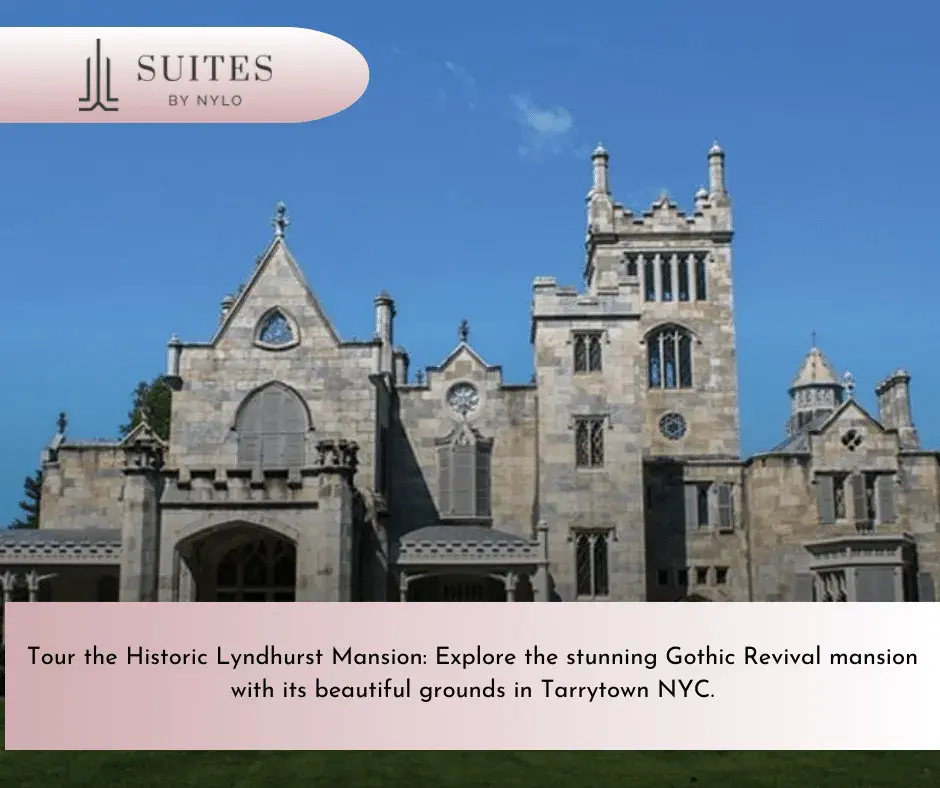Situated on the eastern bank of the Hudson River, the historic Lyndhurst Mansion in Tarrytown, NYC, offers a unique exploration of Gothic Revival architecture. Constructed in 1838, it showcases the brilliant craftsmanship of Alexander Jackson Davis, with its asymmetrical outlines, pointed arches, and tracery details. The mansion is set within 67 acres of beautifully landscaped grounds, including rose, fern and rock gardens, time-honored trees, and a delightful river view. This tranquil setting is an ideal retreat for nature lovers and history enthusiasts alike, promising profound encounters with both architectural and natural beauty.
Unveiling the Lyndhurst Mansion
An architectural gem nestled in Tarrytown, New York City, the Lyndhurst Mansion stands as a remarkable testament to the Gothic Revival style of the nineteenth century. Designed by renowned architect Alexander Jackson Davis, its unique characteristics include asymmetrical outlines, pointed arches, and intricate tracery, all hallmarks of this architectural period.
Completed in 1838, the mansion’s interior remains as captivating as its exterior, boasting 19 rooms adorned with original furnishings and artworks. The mansion’s history is intertwined with prominent figures like railroad tycoon Jay Gould, adding an extra layer of intrigue.
A visit to this historic mansion offers a chance to connect with a bygone era, truly a fascinating journey for those seeking a sense of belonging through shared heritage.
Exploring the Mansion’s Grounds
Beyond the mansion’s lavish interior, the grounds of Lyndhurst estate unfold into 67 acres of beautifully landscaped gardens and parkland, offering a tranquil escape from the bustling city.
Here, visitors can indulge in a variety of activities that connect them with nature. Stroll through the carefully maintained rose, fern, and rock gardens, each reflecting the historic charm of this property.
The presence of century-old trees throughout the estate not only provides shade but also adds to the overall serenity of the setting. The grounds also boast a striking river view, presenting an ideal backdrop for picnics and leisurely walks.
As you wander these scenic paths, you can imagine yourself as part of the rich tapestry of Lyndhurst’s history.

